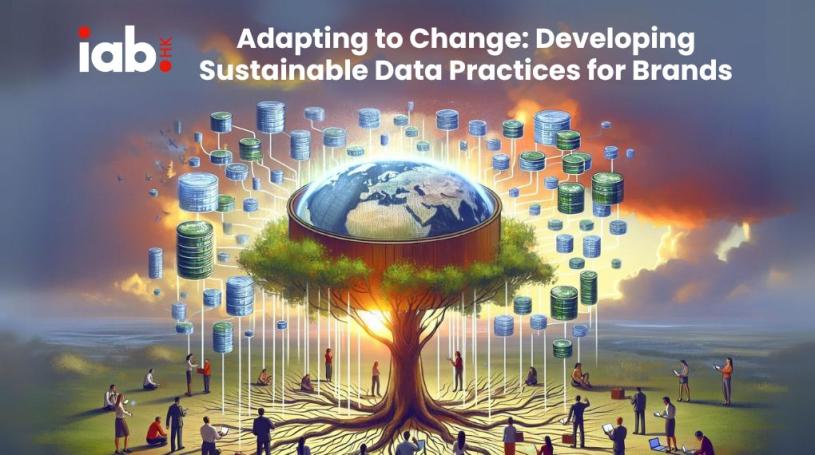Adapting to Change: Developing Sustainable Data Practices for Brands
Google has made a surprising announcement that it will not be deprecating third-party cookies in its Chrome browser as previously planned. This reversal of its earlier decision to phase out third party cookies by 2025 provides the digital advertising industry with more time to adapt and implement alternative solutions as it transitions towards a cookieless future.
Advertiser/Buy-Side Considerations

- Privacy Sandbox APIs:
- Understand the capabilities and implementation details of FLEDGE, Topics, and Attribution Reporting APIs.
- FLEDGE (Federated Learning of Cohorts): Allows advertisers to create and target user cohorts based on browsing behavior, without relying on individual user identifiers.
- Topics API: Enables interest-based advertising by categorizing users into broad interest-based segments, without revealing individual user data.
- Attribution Reporting API: Provides a privacy-preserving solution for measuring the effectiveness of advertising campaigns.
- Assess the impact of these APIs on your current targeting and measurement strategies and plan for the transition.
- Evaluate how the cohort-based and interest-based targeting approaches in the Privacy Sandbox APIs differ from your current cookie-based targeting methods.
- Determine the changes required in your data collection, audience segmentation, and campaign optimization processes to adapt to the new APIs.
- Evaluate the technical and operational requirements for integrating the Privacy Sandbox solutions into your demand-side platform (DSP).
- Collaborate with your DSP partner to understand the integration requirements, such as data feeds, reporting, and campaign setup.
- Ensure your AdTech stack is capable of supporting the technical implementation of the Privacy Sandbox APIs.
- Understand the capabilities and implementation details of FLEDGE, Topics, and Attribution Reporting APIs.
- Protected Audience API:
- Examine how the Protected Audience API can be leveraged to maintain audience targeting capabilities in a privacy-centric manner.
- The Protected Audience API enables advertisers to create privacy-preserving audience segments based on first-party data, without revealing individual user information.
- Understand the technical specifications and implementation details of the Protected Audience API.
- Assess the potential impact on your existing targeting and measurement strategies and plan for the integration of the Protected Audience API.
- Evaluate how the Protected Audience API can be integrated into your current audience targeting and campaign optimization workflows.
- Determine the changes required in your data collection, audience modelling, and reporting processes to leverage the Protected Audience API.
- Collaborate with demand-side partners to ensure seamless integration and implementation of the Protected Audience API.
- Work closely with your DSP and other AdTech partners to implement the Protected Audience API within your advertising ecosystem.
- Ensure data connectivity, audience segmentation, and campaign performance reporting are aligned with the Protected Audience API's capabilities.
- Examine how the Protected Audience API can be leveraged to maintain audience targeting capabilities in a privacy-centric manner.
- First-Party Data Strategies:
- Explore alternative targeting and measurement approaches, such as contextual advertising and first-party data strategies.
- Investigate the use of contextual targeting, which relies on the content of the web page rather than individual user data.
- Develop strategies to collect, enrich, and activate your first-party data (e.g., site registration data, transactional data, customer surveys) for audience targeting and segmentation.
- Develop processes to collect, enrich, and activate your first-party data to power effective audience targeting.
- Implement robust data collection and management practices to gather, clean, and organize your first-party data.
- Leverage data enrichment techniques, such as appending demographic, interest, and behavioural data, to enhance the value of your first-party data.
- Integrate your first-party data with your AdTech stack to enable audience targeting, segmentation, and campaign optimization.
- Experiment with cohort-based targeting and other privacy-preserving techniques to reach your target audiences.
- Explore the use of cohort-based targeting, where users are grouped into larger segments based on shared characteristics, rather than targeting individual users.
- Investigate other privacy-preserving techniques, such as differential privacy and federated learning, to enhance your targeting capabilities while maintaining user privacy.
- Evaluate the use of Customer Data Platforms (CDPs) to manage and activate your first-party data.
- Assess the capabilities of CDPs in collecting, unifying, and activating your first-party data across your marketing and advertising channels.
- Determine the integration requirements and operational changes needed to leverage a CDP within your AdTech stack.
- Explore alternative targeting and measurement approaches, such as contextual advertising and first-party data strategies.
Media/Sell-Side Considerations

- Related Website Sets (RWS):
- Understand how RWS allows companies to declare relationships among their owned and operated websites.
- RWS is a browser-supported mechanism that enables limited third-party cookie access for specific purposes, such as:
- Providing a consistent user experience across a company's different websites.
- Enabling cross-site user authentication and account management.
- Facilitating first-party data sharing and audience enrichment between a company's sites.
- Evaluate the technical and operational requirements for implementing RWS across your company's website properties.
- Identify which of your websites qualify as "related" and can be included in an RWS declaration.
- Develop a governance framework for managing RWS declarations, including processes for adding or removing websites from the set.
- Collaborate with browser vendors and industry groups to stay informed about the evolving RWS specifications and best practices.
- Monitor for any changes or updates to the RWS standard that may impact your implementation.
- Publisher Partnerships and Google PAIR:
- Explore opportunities for joint development and implementation of privacy-preserving advertising solutions, such as Google's PAIR (Publisher Advertiser Identity Reconciliation).
- PAIR allows publishers and advertisers to reconcile audience data in a privacy-compliant manner, enabling more effective targeting and measurement.
- Evaluate the technical and operational requirements for integrating PAIR or similar publisher-provided audience solutions into your AdTech stack.
- Explore opportunities for joint development and implementation of privacy-preserving advertising solutions, such as Google's PAIR (Publisher Advertiser Identity Reconciliation).
- Privacy Practices and Data Clean Rooms:
- Ensure your data collection and usage practices align with evolving privacy regulations, such as GDPR and CCPA.
- Review and update your data privacy policies, consent management processes, and data handling procedures to comply with the latest regulations.
- Implement data minimization and transparency measures to build trust with your publisher partners and end-users.
- Implement robust data governance and transparency measures to build trust with your publisher partners and end-users.
- Establish clear data governance frameworks, including data access controls, auditing, and reporting mechanisms.
- Enhance transparency around your data collection, usage, and sharing practices to foster trust with your partners and customers.
- Stay abreast of the latest industry guidelines and best practices for privacy-preserving advertising.
- Regularly review and implement the latest industry standards and guidelines for data privacy and responsible advertising.
- Participate in industry initiatives and working groups to contribute to the development of privacy-preserving advertising solutions.
- Explore the use of data clean rooms to enable secure data collaboration and audience activation while maintaining privacy.
- Evaluate the potential of data clean rooms, which provide a secure environment for advertisers and publishers to collaborate on audience data while maintaining data privacy.
- Assess the technical and operational requirements for implementing data clean room solutions within your AdTech ecosystem.
- Ensure your data collection and usage practices align with evolving privacy regulations, such as GDPR and CCPA.
- Identifier Solutions (UID 2.0):
- Evaluate the adoption and integration of emerging identifier solutions, such as UID 2.0, to maintain audience targeting capabilities in a cookieless environment.
- Understand the technical specifications and industry adoption of alternative identifier solutions, like UID 2.0, that aim to replace third-party cookies.
- Assess the potential impact of these identifier solutions on your current targeting and measurement strategies.
- Assess the technical and operational requirements for implementing these identifier solutions within your AdTech stack.
- Evaluate the integration requirements, data feeds, and reporting capabilities of the selected identifier solution.
- Ensure your AdTech infrastructure can support the implementation and ongoing management of the chosee
- Evaluate the adoption and integration of emerging identifier solutions, such as UID 2.0, to maintain audience targeting capabilities in a cookieless environment.
By addressing both advertiser/buy-side and media/sell-side considerations, your AdTech business can develop a comprehensive strategy for navigating the cookieless world and emerging as a leader in the evolving digital advertising landscape.
Author: Alex Lee, Group Head of Digital & Data Analytics, Uni-China Group (IAB Hong Kong AdTech & Programmatic Committee)

Article launched on 09/16/2024
APPENDIX
About the IAB (Hong Kong)
The Interactive Advertising Bureau (Hong Kong) empowers the media and marketing industries in Hong Kong, to thrive in the digital economy. It is comprised of more than 100 leading media and technology companies that are responsible for selling, delivering, and optimizing digital campaigns. Working with its member companies, the IAB (Hong Kong) evaluates and recommends standards and practices and fields critical research on interactive advertising.
The IAB (Hong Kong) Programmatic Advertising Committee
The Programmatic Advertising Committee is focused on evaluating the value and potential of Programmatic Advertising. This includes evaluation of the programmatic advertising ecosystem and terminology, disclosure principles, ad performance evaluation, opportunities/obstacles by platform, scalable/custom solutions, consumer perceptions, messaging and more.
Please address any questions or comments about this blog to
Alvina Chan, Secretariat Office, IAB (Hong Kong) - alvina.chan@iabhongkong.com


